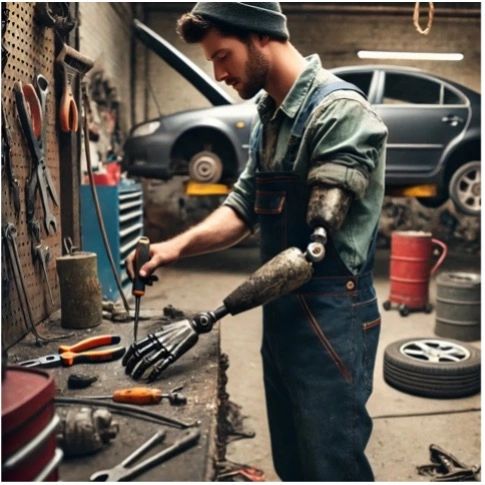Characteristics of Major Upper-Extremity Amputations
Share

Upper-extremity amputations profoundly impact individuals, particularly active trauma victims who seek to regain their previous levels of functionality and independence. At Marins Med, we are committed to understanding these challenges and developing solutions that cater to the unique needs of upper-limb amputees. Our focus is on creating prosthetic devices that are not only functional and durable but also user-centric, fostering lifelong acceptance and use.
Key Insights into Upper-Extremity Amputations
Incidence and Demographics: Research by Dr. Elizabeth Inkellis and colleagues, using data from the National Trauma Data Bank (NTDB) from 2009 to 2012, highlights the prevalence of upper-extremity amputations in the U.S.
- 1,386 trauma-related major upper-extremity amputations
- Incidence rate: 46 cases per 100,000 trauma admissions
- Predominantly affecting males (76%) with an average age of 42 years
- Females accounted for 24% with an average age of 41 years
Common Amputation Levels:
- Humerus (35%)
- Forearm (30%)
- Hand (14%)
Hospitalization and Reoperation:
- Average hospital stay: 17 days
- 31% required at least one reoperation
- University-associated hospitals exhibited significantly higher reoperation rates
- Reoperations linked to longer hospital stays, averaging an additional 7 days
Injury Mechanisms:
- Motor-vehicle trauma: 33.1%
- Machinery accidents: 20.7%
- Other causes include motorcycle accidents, cutting/piercing accidents, and firearm injuries.
Complications and Mortality:
- Major complications included deep surgical site infections, prosthesis failures, and pulmonary issues
- 5% in-hospital mortality rate
- Higher mortality observed in patients with compartment syndrome
The Marins Med Approach
Catering to Trauma Victims: Unlike amputations due to disease, trauma-related amputations often occur in younger, more active individuals who desire to return to their previous activities. This demographic requires prosthetics that offer high functionality, durability, and ease of use. At Marins Med, we prioritize these needs, ensuring our devices support an active lifestyle.
Age and Prosthetic Acceptance: Younger amputees are more likely to adopt and consistently use prosthetic devices if they find them functional and easy to integrate into their daily lives. Our user-centric design approach ensures that our prosthetics, like the ProHook, are quickly adopted and remain a lifelong solution for our users.
Long-Term User Engagement: By focusing on the specific needs and preferences of upper-limb amputees, we aim to reduce the high abandonment rate of prosthetic devices. Our collaboration with Root3Labs and the Victoria Hand Project enables us to continuously innovate and improve our products, ensuring they meet the evolving needs of our users.
Conclusion
Understanding the incidence and characteristics of upper-extremity amputations is crucial for developing effective prosthetic solutions. At Marins Med, we are dedicated to enhancing the quality of life for upper-limb amputees by providing prosthetics that empower them to play hard, work hard, and push boundaries every day.
For more information on our products and ongoing research, visit Marins Med. Stay tuned for the latest updates and insights into medical research and healthcare advancements.
Note: The information presented in this blog post is based on the study "Incidence and Characterization of Major Upper-Extremity Amputations in the National Trauma Data Bank" by Elizabeth Inkellis, MD, and colleagues, published in The Journal of Bone & Joint Surgery. All credit to the researchers for their significant contributions to this field.
